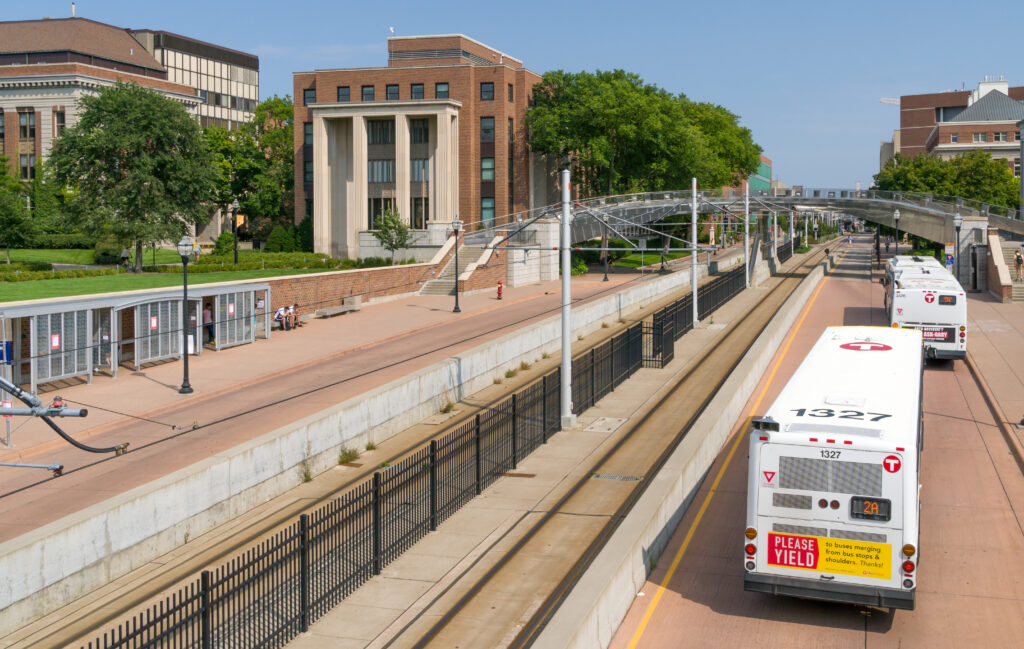
Background
Since 2002, Metro Transit in Minneapolis/St. Paul has been using OnRoute an Intelligent Transportation Systems (ITS) software, to monitor and manage their bus operations. It provides data that can be used to make scheduling decisions for routes, send real-time departure information to riders, and make service adjustments. Gary Nyberg, Manager of Technology Systems, won the 2017 ITS Minnesota Public Sector Achievement Award for improving public transit efficiency in Minneapolis, thanks to this technology, and other software that they use, that works “behind the scenes” to power their bus operations.
Challenges
Imagine this: Before implementing OnRoute, a bus operator calls for help by pressing a silent alarm. The control center sees the bus is scheduled to stop at 8:15 am. They ask a supervisor to find the bus, only to discover that the bus is not at its scheduled location. They now have a few seconds to locate the bus and resolve the issue. This was very much a “hit and miss operation,” said Nyberg, and one of the reasons that he wanted ITS software that could seamlessly communicate information back to the control center, and out to the customer.
Results
“It was a game changer for our organization. At a real core level, the fact that you know where all your buses are, everywhere, all the time, was something we were never able to do before,” said Nyberg. This allows Metro Transit to better manage operations more effectively. “It’s impossible for supervisors in the control center to sit there and monitor 900 buses, so Vontas OnRoute (TransitMaster) filters out the information we need,” he said. Their recent OnRoute upgrade further improves the real-time information sent to passengers.
“If you happen to look at your cell phone or a real-time sign, you see a bus is approaching in five minutes, but it can take a message 60 seconds to be sent and another few seconds until it shows up on the sign or in the app. What has been an issue is when that information would stay on the sign after the bus would depart. So if the bus is due, you’re looking for that bus to show up any second, and the bus had already departed, but it took longer for that information to get out,” said Nyberg.
They won’t have those issues anymore and “this correlates with trust in transit and being able to retain ridership.” Metro Transit wants to continue to use different tools to improve their service. Their next advancement is providing passenger load information. “If you see a bus is coming with a huge load, you can either be prepared to get on that bus and stand or you’ve got a bag of groceries and you just wait for the next bus that has a seat.” They’re also looking at real-time monitoring of bus bike racks, to let customers know in advance if there’s room for their bike. “It gives the customer more information and more power over how they choose to ride,” said Nyberg.
